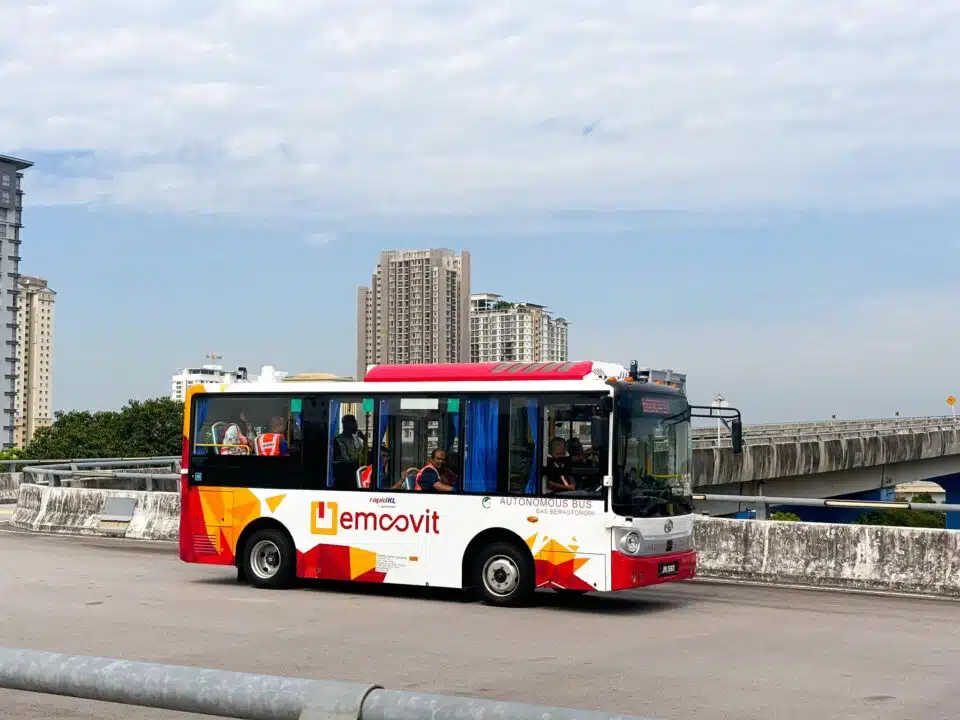PUTRAJAYA, Sept 9 — The autonomous bus initiative is one of the 40 use cases for the 5G that Malaysia will showcase as the country prepares to take on Asean chairmanship next year, said Digital Minister Gobind Singh Deo.
He said the initiative is a collaboration between Digital Nasional Bhd (DNB), the nation’s 5G network provider, technology giant Ericsson, and local autonomous vehicle solutions developer eMooVit Technology Sdn Bhd.
“Integrating 5G applications in autonomous public vehicles such as the ones demonstrated today will boost the overall experience for the users, allowing them to feel safer and stay better connected.
“This is in line with the government’s efforts to transform Malaysia into a digital nation, where digital technology such as 5G can significantly improve public services, businesses as well as communities,” he said at a press conference after the demonstration here.
Transport Minister Anthony Loke Siew Fook and eMooVit chief executive officer Hairi Zamzuri were also present.
Gobind said the collaboration, which follows a memorandum of understanding signed in May, involves proof-of-concept (POC) trials of 5G use cases such as in-vehicle 5G public Wi-Fi connectivity, real-time remote vehicle monitoring, and journey log collection.
He added that the buses covered 1,000km during POC trials.
“Once commercialised, these use cases, which include in-vehicle closed-circuit television and real-time telemetry data monitoring, will make autonomous bus rides safer and more reliable for passengers, as well as help improve cost efficiency for the bus operator,” he said.
Gobind said future use case trials include the integration of autonomous buses with smart city infrastructure and 5G remote driving in emergencies.
According to him, autonomous public transportation is being trialled and deployed in many cities across the globe, from Shanghai to Hamburg, where in May this year, the United Kingdom introduced the Automated Vehicles Act that could see self-driving vehicles on its roads by 2026.
“Now, we’re seeing the same technology being developed in Malaysia by a Malaysian company. Each autonomous vehicle’s system is customised to the road and traffic conditions, passenger demands and local laws,” he said.
Gobind said good 5G connectivity is the enabler for autonomous vehicles, adding that Malaysia has the necessary infrastructure, with the current network as the backbone to ensure their deployment.
“Malaysia’s 5G network deployed by DNB now covers 82 per cent of populated areas as of end-August. It has been globally recognised as one of the best in the region and the world,” he said.
He said the Digital Ministry is observing the deployment and development of private 5G networks, which include POC trials in sectors such as oil and gas, healthcare, manufacturing, transportation, and logistics.
Meanwhile, Loke noted that amendments to the Road Transport Act 1987 are necessary, adding that his ministry is prepared to facilitate the use of autonomous buses by amending several laws to promote vehicle digitalisation.
“We need to be open about this matter because it is a global technological advancement. We must look ahead because maybe in 10 or 20 years transportation systems may no longer rely on human drivers,” he said.
Loke also said the ministry would study autonomous vehicle laws in other countries.
Hairi said the passenger service trial for the autonomous bus will start on September 23 in Putrajaya.
— Bernama





